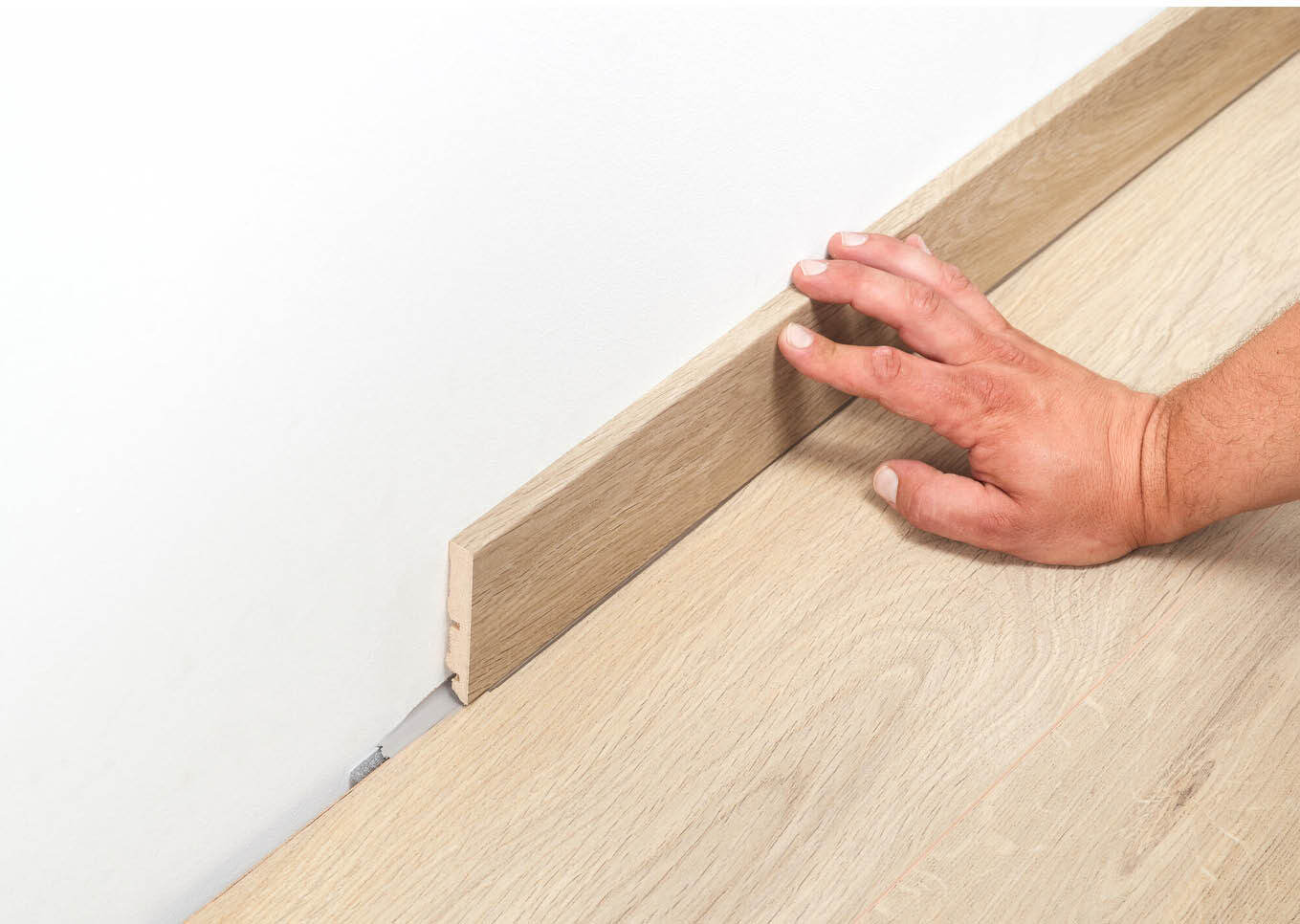When it comes to installing laminate flooring, a floating installation is often recommended. But why should you install your laminate as a floating floor? The answer lies in the nature of laminate, which is made from organic wood materials. In this article, we’ll explain why a floating installation is essential for laminate flooring and how it helps your floor adapt to natural changes in the environment.
Understanding laminate's natural expansion and contraction
Laminate flooring is made up of at least 80% organic wood materials. This means that it expands and contracts with changes in room temperature and humidity. As the climate in a room fluctuates, the planks will naturally shift. Installing the floor using the floating method allows the laminate to move freely, preventing any damage caused by the floor’s expansion or contraction.
What is a floating floor?
A floating floor is not glued, nailed, or attached to the subfloor. Instead, the laminate planks are connected to one another using a click-lock system, forming a continuous surface that "floats" over the subfloor. This method allows the floor to expand and contract as needed, without restrictions that could lead to warping or cracking.
The importance of an expansion gap
To allow your laminate floor the space it needs to expand, it’s essential to leave an expansion gap of at least 8–10 mm between the floor and any fixed structures, such as walls, door frames, or pipes. This gap ensures the laminate has room to move without becoming compressed, which could lead to damage. Skirting boards or trims are then used to cover the gap, leaving the floor looking seamless while still providing the necessary space for movement.
Tip:
When installing your floor, use flooring spacers to make sure you're maintaining the correct distance for an expansion gap.

Why you shouldn't install laminate under fixed constructions
Because laminate flooring requires room to expand, it’s important to avoid installing it underneath fixed constructions, such as kitchen cabinets or built-in wardrobes. Fixed structures can trap the laminate in place, preventing it from expanding and potentially causing the planks to warp or buckle. Instead, always ensure the floor has room to "breathe" by keeping it free from heavy, immovable objects.
Benefits of a floating installation
-
Flexibility: A floating floor can handle natural movement, which extends the lifespan of your laminate.
-
Easy installation: Floating floors are quicker and easier to install compared to glued or nailed-down floors.
-
Cost-effective: You save on adhesive and labour costs, making it a more affordable option for many homeowners.
-
Repair-friendly: Individual planks can be replaced without needing to disrupt the entire floor.
Conclusion
Installing your laminate floor as a floating floor is the best way to accommodate the natural expansion and contraction of the wood materials. By leaving the necessary expansion gap and avoiding installation under fixed constructions, you’ll ensure your floor remains in top condition for years to come. Plus, the ease and flexibility of floating installations make them a popular and practical choice for any home.
Want to see and feel examples of laminate floors?
.jpg?width=1200&height=839&name=Hero%20image_Myfloorstyle_excellence%20plus%20acc(1200x839).jpg)

.jpg?width=300&name=Overview%20image%20blog%20home_Myfloorstyle_sunset%20boulevard(398x344).jpg)
.jpg?width=300&name=Overview%20image%20blog%20home_Myfloorstyle_gyant%20xl%20warm%20natural(398x344).jpg)
.jpg?width=300&name=Overview%20image%20blog%20home_Myfloorstyle_basetec%20underlay(398x344).jpg)